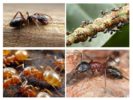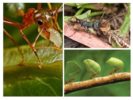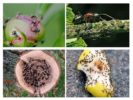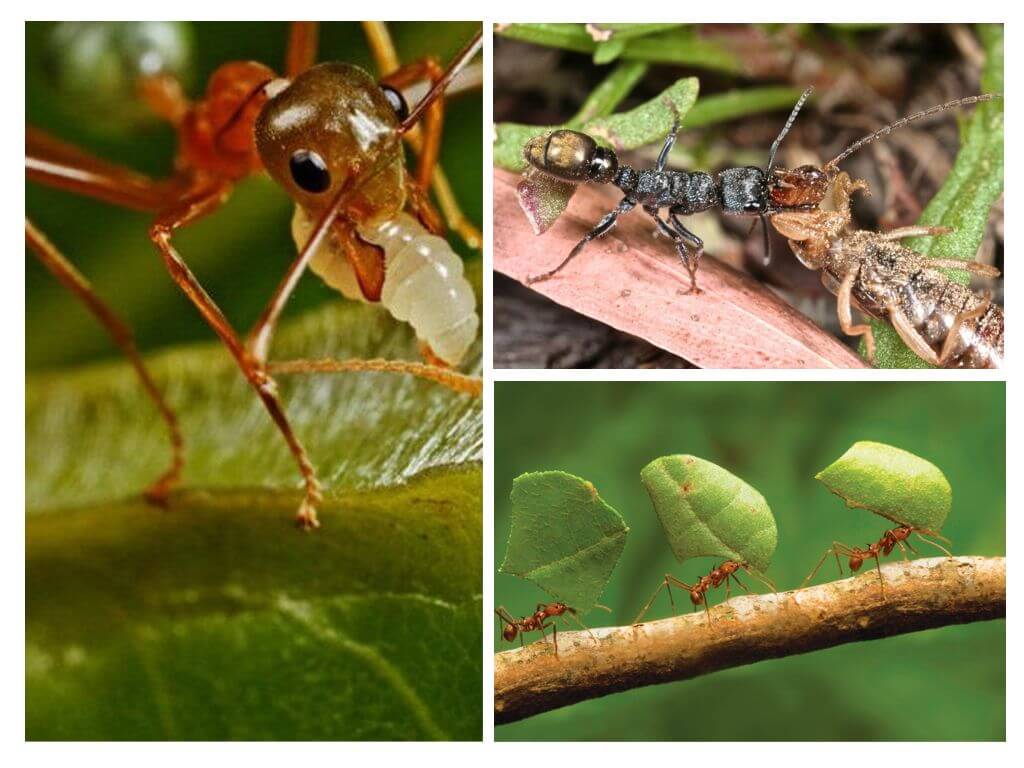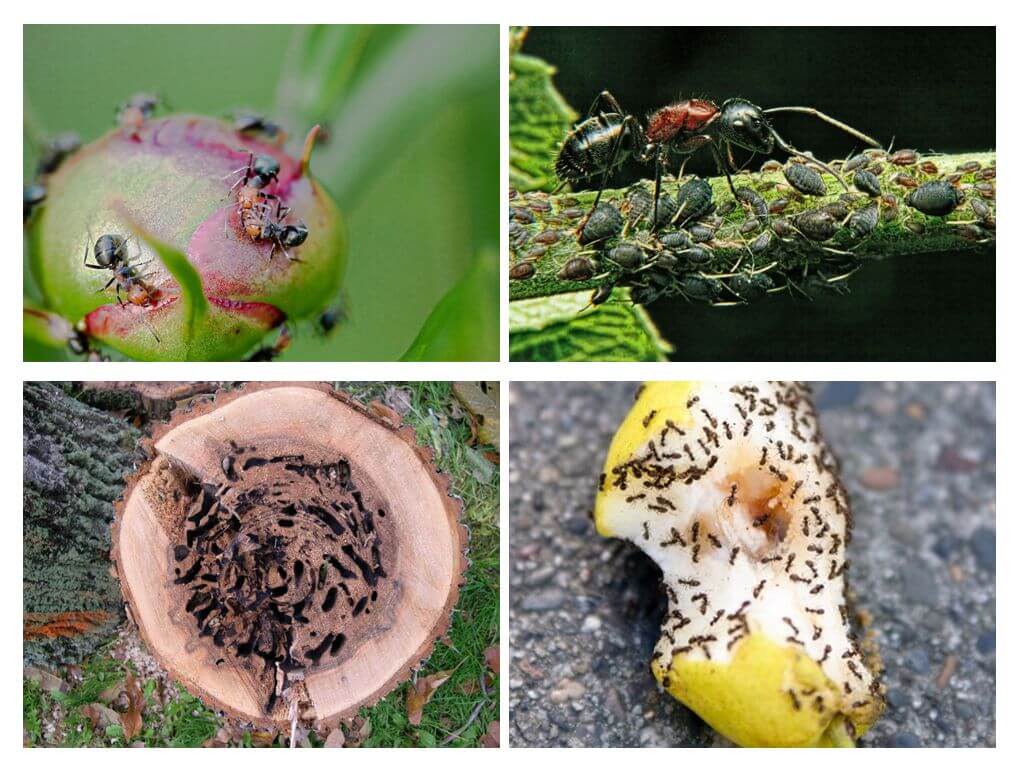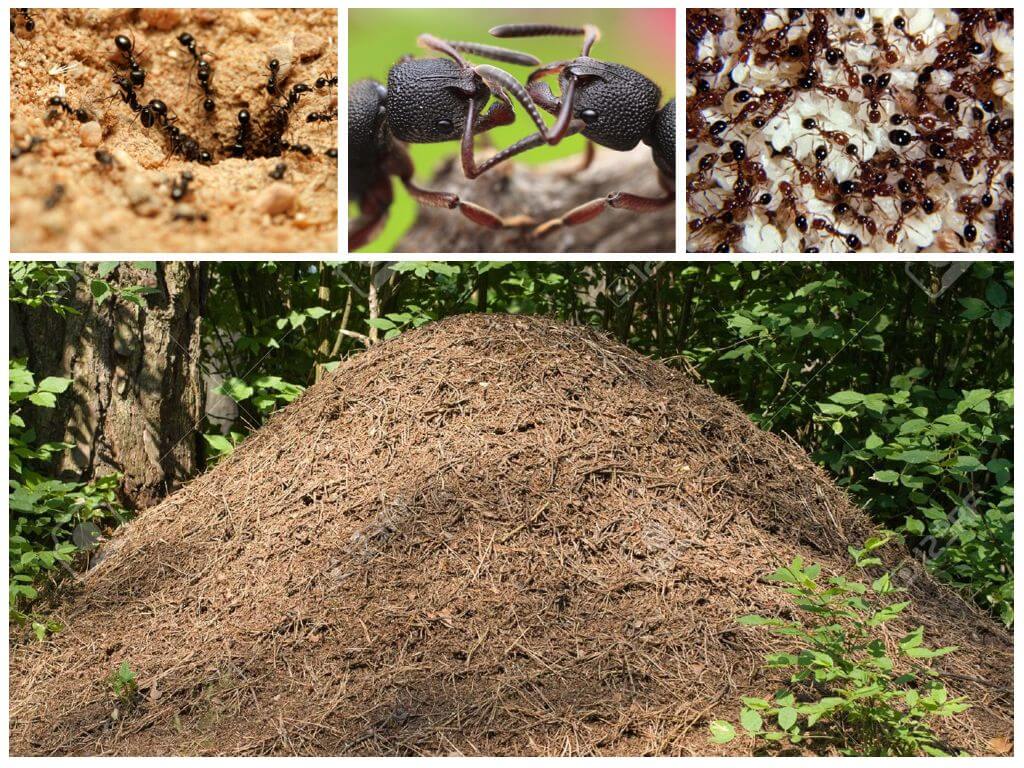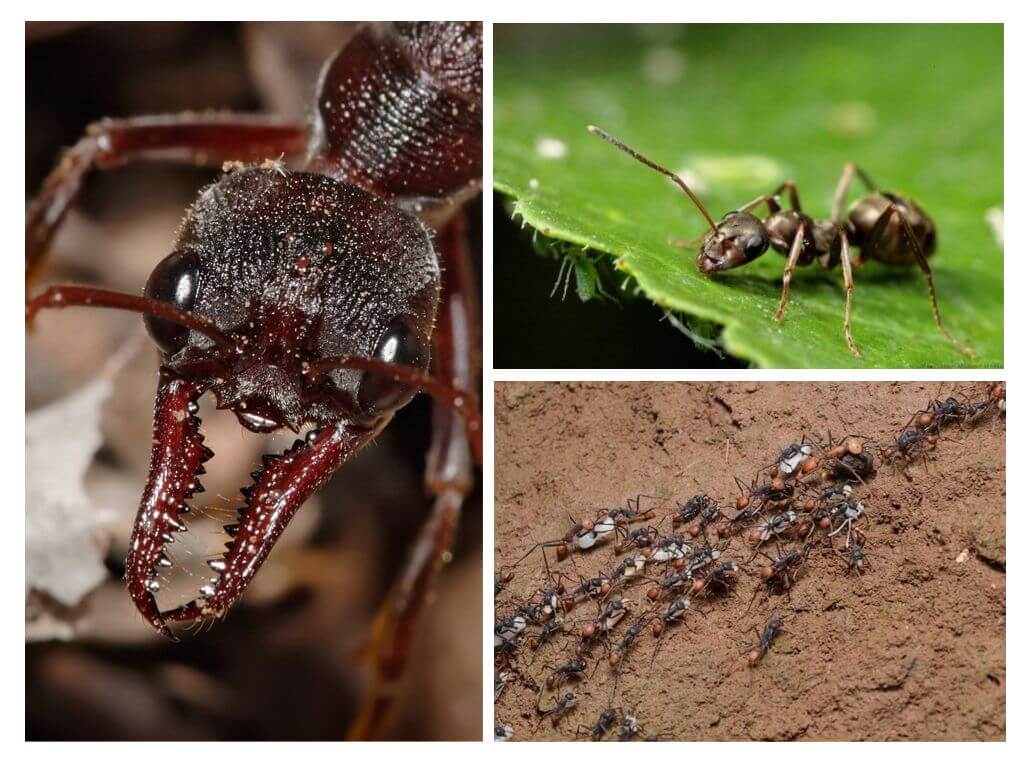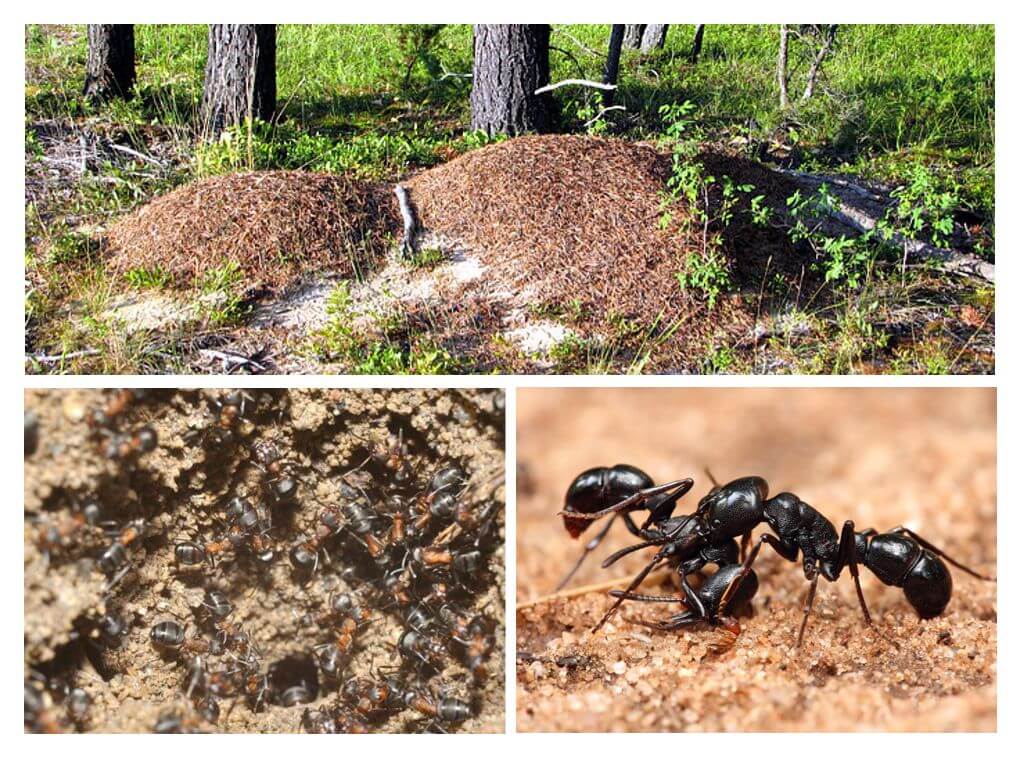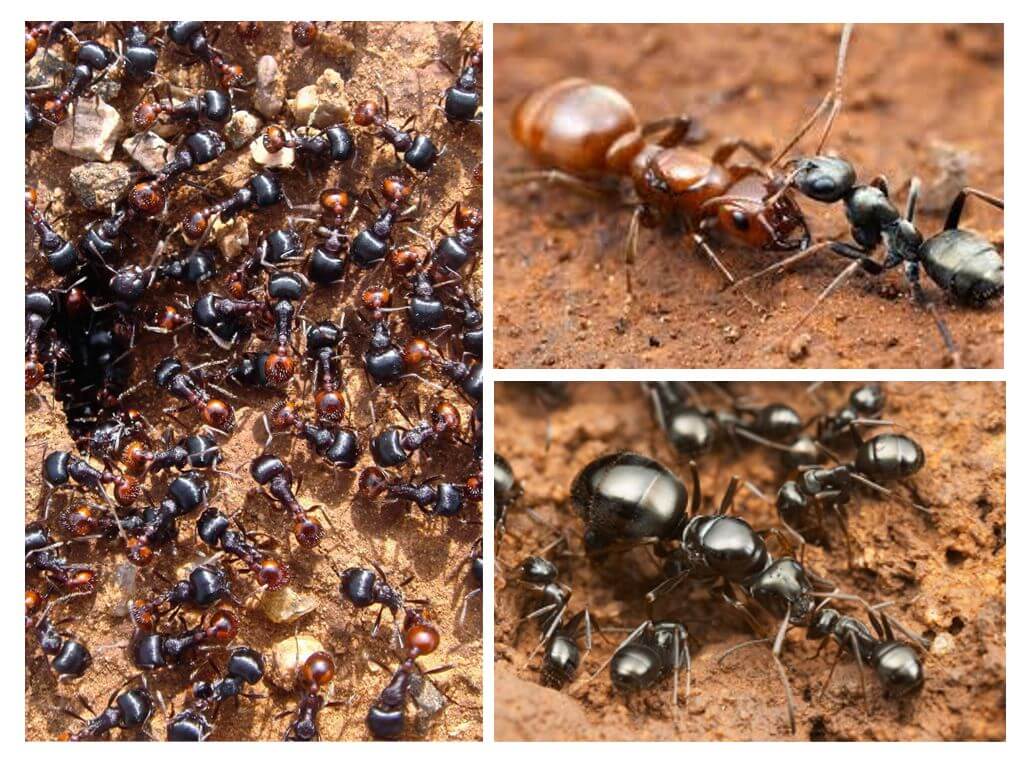- Ants
- Insect benefits
- Harm from ants
Everyone from the school bench knows that it is impossible to destroy anthills in the forest, because their inhabitants care about the surrounding nature. But in a garden or a vegetable garden, small workers can cause a lot of trouble to a person. Forest ants also live in the garden, the benefits and harms of which will be described below.
Types of ants in the garden and suburban area
Most often, a person is faced with a garden and forest species of ants. But besides them, other residents may appear on the plot. Each brings its own benefit and harm to gardeners.
Dark brown ant
The insect prefers to settle in old trees and hollows. The ants in the garden prey on harmful insects, process old wood and bred aphids. They have an average size: working individuals grow up to 4-5 mm, and the queen - up to 6-8 mm.
Woodworm
It is rare in the country. This view is quite large: queen reaches 18 mm, and working individuals - 14 mm. They prefer to settle in the following places:
- rotten stumps;
- driftwood;
- rotten tree roots;
- log buildings.
On a note!
Woodworm processes wood, which can cause a lot of problems for the gardener. An ant will damage garden furniture made of wood until it turns into dust.
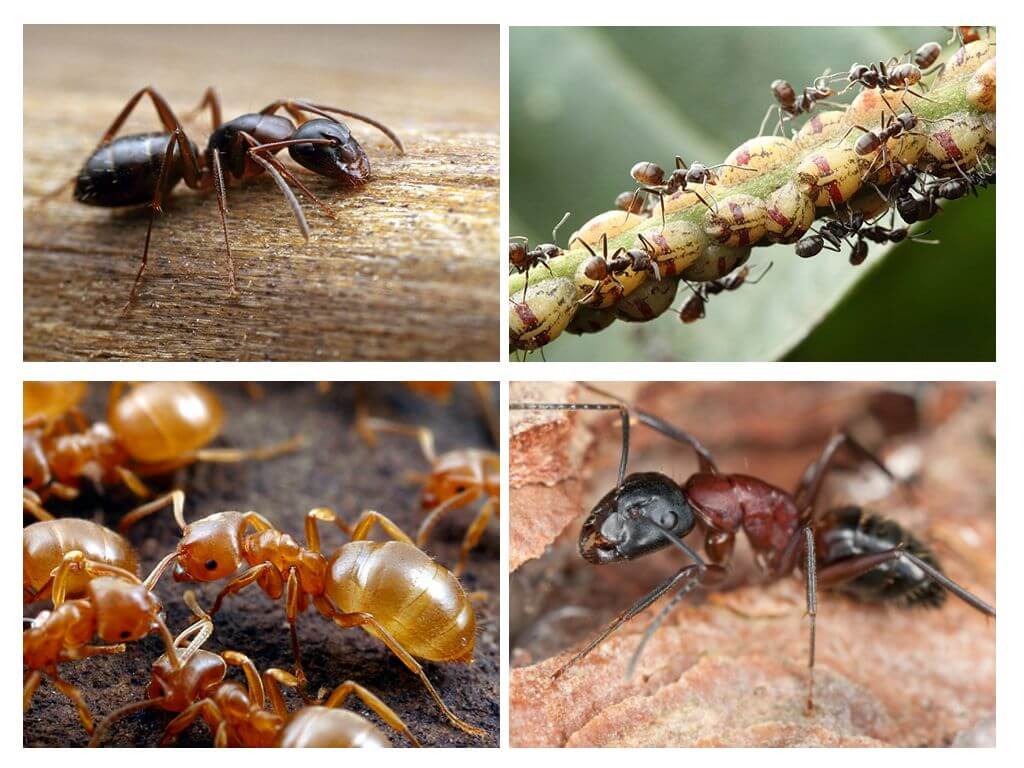
Forest ants
They are also called red ants. They settle in the forest, but can appear in areas that are located close to the forest belt. They also breed aphids and feed on its secretions.
Ants at the site collect dead insects and destroy pests. In the forest, they contribute to the growth of plants, and in the garden cause harm to fruit and vegetable crops.
Yellow ants
They love to live underground. They appear in the air only during the summer period, which begins in July and ends in August.
On a note!
Yellow ants plant aphids on the roots of plants, and seedlings are thinned out, snacking on its roots.
This species leads to the death of plants in the garden. You can find them by the "bump" above the ground and vegetation that has thinned over this bulge.
Black ant
They like to settle between stones and in old stumps. Behaves aggressively. They can choose the house of a yellow ant and evict it from there. Ants in the garden breeding aphids, which destroys cultivated plants.
The benefits of ants
These arthropods perfectly fertilize the soil. The earth is enriched with potassium and fluorine, it becomes loose. Thanks to this, plants grow better. Their foliage becomes strong and green.
Insects prey on various pests inhabiting beds and trees:
- caterpillars
- spider mite;
- slugs;
- midges.
In one day, the ant family is able to eat and collect about two thousand harmful insects.
On a note!
Gardeners and gardeners are interested in which ants are useful for the garden. The most beneficial forest species. Some people specially plant several coniferous plants on the site in order to create a favorable environment for the ant hill.
Insects love to eat sweet floral nectar, so they participate in pollination of flowers. Forest ants collect dry leaves, twigs, and blades of grass from all around, thereby clearing the area near anthill from the trash.And gardeners may notice that in the area of the ant house the vegetation always feels better.
In ant passages, many beneficial microorganisms are formed that nourish the roots of plants, making them strong and resistant to changes in the environment.
The harm caused by ants
The benefits of hard-working insects are considerable, but the harm from ants in the garden is great. In the forest, workers help trees by planting aphids in their foliage. So the plants fight the fungus. In the aphid garden, young plants spoil and prevent them from developing.
Interesting!
Hardworking arthropods protect aphids from other insects, and with the onset of cold weather they carry it to the nest. In the spring, the ant family again planted pests on young leaves in order to further use it for their own purposes.
But not only aphids interfere with gardeners. Here's another reason why ants are harmful in the garden:
- They eat sweet fruits and spoil them. Most often, garden strawberries and strawberries suffer.
- Ants gnaw through the petals of unopened buds to get to the nectar and eat it. Because of this, the flower dies or becomes ugly.
- The anthill, located on an alpine hill, is difficult to remove, and its appearance spoils the aesthetics and causes damage to the flowers.
- Insects enter a private home and spoil food supplies.
Pests love to collect the seeds of some plants, which are considered a weed at their summer cottage. When the celandine bush appears near the anthill, the next year the weed will begin to grow on all beds. This happens because its seeds are carried by ants.
On a note!
Celandine is a medicinal plant. It is also added to chickens food and planted near hives.
In addition to aphids, insects breed worms, cicadas and some caterpillars. All of them feed on plant foods and can harm plants in the garden.
Garden ants, the harm and benefits of which are obvious, are frequent visitors to the sites. And although they fertilize the land, gardeners prefer get rid of insects on fruit treesbeds using various poisons and home remedies. But sometimes it's worth the lead fighting aphidsand not with her "master."
